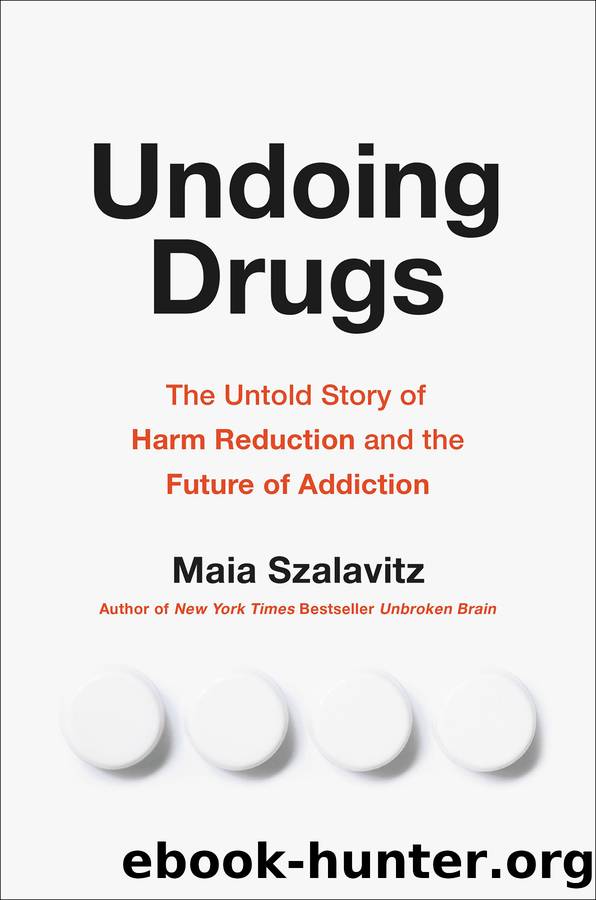Undoing Drugs: The Untold Story of Harm Reduction and the Future of Addiction by Maia Szalavitz

Author:Maia Szalavitz [Szalavitz, Maia]
Language: eng
Format: epub
ISBN: 9780738285764
Google: dZjZzQEACAAJ
Publisher: Hachette Books
Published: 2021-11-15T00:15:58.911523+00:00
AS DENNING LEARNED MORE ABOUT ADDICTION TREATMENT, SHE CONTINUED to be outraged by the lack of scientific justification for its practices and the harmful nature of so many of them. Nearly all of the programs she visited and read or heard about from attendees were utterly blind to ethical considerations around power. It was as if someone had read Michel Foucaultâs Discipline and Punish: The Birth of the Prison and decided to use the panopticon as a clinicianâs guide to the treatment milieuâor chose to copy the brutal tactics that appeared among the âguardsâ in the Stanford Prison Experiment as a model for therapy. Absolute power on the part of the treatment program and complete obedience by patients were simply assumed to be acceptable and appropriateâwith little room for disagreement, rare or difficult access to any reliable form of complaint procedure, and no recognition of how frequently unchecked power leads to abuse and atrocities. The increasing rejection of paternalism seen in general medicine was almost nowhere to be found here.
While this was most extreme in therapeutic communities, it wasnât limited to them. In many medication and Minnesota Model/twelve-step programs, clients are frequently and repeatedly told to âshut up and listen.â (One saying: âTake the cotton out of your ears and put it in your mouth.â) Even programs with the most caring, gentle reputationsâwhich would never allow anything as extreme as attack therapyâare still likely, even now, to have counselors who âjokeâ that every time their patientsâ lips move, they are lying.
Obviously, all of this conflicts with harm reduction ideas of âmeeting people where they areâ and following their lead as they set their own goals. The Minnesota Model and harm reduction clash not just because the former has only one acceptable goal for patients, but also because the twelve-step view of complete âpowerlessnessâ during active addiction is falsified by the demonstrable progress toward health seen in programs like needle exchange. Confrontational therapeutic communities are clearly incompatible, too: breaking people down emotionally in order to rebuild their personalities cannot be reconciled with patient dignity and autonomy and has been shown to be harmful.
Even medication treatment, which is potentially philosophically harmonious with harm reduction, is often problematic in practice. For example, clients practicing harm reduction by, say, using marijuana instead of cocaine, can be expelled from medication treatment for opioid addiction, since they are not completely abstinent. Such a policy is clearly not compatible with harm reduction because it both imposes goals on patientsârather than meeting them where they areâand increases their risk of death.
None of this is to say that these approaches canât be modified to be more congruent and evidence-based, simply that they typically arenât. Many people within harm reduction have found twelve-step programs usefulâincluding me. The real problem is claiming that one approach is the only way and contains the only truth about addictionârather than, as one twelve-step slogan has it, telling people to âtake what you like and leave the rest.â
In light of this messy and frequently hostile treatment field, harm reductionists faced an enormous challenge.
Download
This site does not store any files on its server. We only index and link to content provided by other sites. Please contact the content providers to delete copyright contents if any and email us, we'll remove relevant links or contents immediately.
Spare by Prince Harry The Duke of Sussex(5077)
Machine Learning at Scale with H2O by Gregory Keys | David Whiting(4192)
Fairy Tale by Stephen King(3221)
Will by Will Smith(2795)
Hooked: A Dark, Contemporary Romance (Never After Series) by Emily McIntire(2502)
The Bullet Journal Method by Ryder Carroll(2487)
Rationality by Steven Pinker(2291)
Can't Hurt Me: Master Your Mind and Defy the Odds - Clean Edition by David Goggins(2230)
It Starts With Us (It Ends with Us #2) by Colleen Hoover(2203)
Friends, Lovers, and the Big Terrible Thing by Matthew Perry(2125)
The Becoming by Nora Roberts(2091)
Love on the Brain by Ali Hazelwood(1965)
HBR's 10 Must Reads 2022 by Harvard Business Review(1778)
The Strength In Our Scars by Bianca Sparacino(1777)
A Short History of War by Jeremy Black(1764)
Leviathan Falls (The Expanse Book 9) by James S. A. Corey(1651)
515945210 by Unknown(1602)
A Game of Thrones (The Illustrated Edition) by George R. R. Martin(1594)
Bewilderment by Richard Powers(1541)
